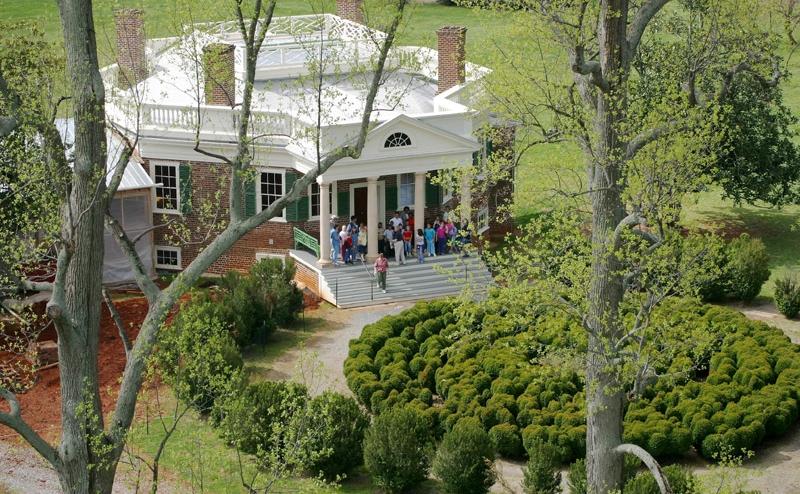Unfinished during his lifetime and not yet fully restored, the rural villa Thomas Jefferson called Poplar Forest still may be his most perfect architectural work – an idealistic symbol of the balance he sought between man and the natural order.
It took a mere fourteen years to complete (compared to Monticello’s forty), and its condition today, thoughtfully and painstakingly restored by a team of preservationists, resembles almost precisely the raw structure he knew early in its construction.
“When he lived here during its first five years, the walls were bare brick just like they are now,” says Travis McDonald, Director of Architectural Restoration. “But the bare brick is very powerful. There’s something there that connects – an intimacy from seeing every little piece. You can really feel Jefferson at Poplar Forest.”
The octagonal-shaped house, a blend of some of the most modern styles of Jefferson’s time — as well as some very ancient ones – remains about one-quarter unfinished. “We went back and forth about how much to do, and finally arrived at leaving two rooms undone,” he says.
It’s a Palladian villa that ignores 18th-century British re-interpretations of the master’s work, while paying tribute to the eight-sided Roman Tower of the Winds in Athens. “There’s a big dose of French modernism too,” he says. “I try to get people to think of it as radical modernism for the early 19th century. Poplar Forest is an ornamental house in the middle of nature.”
Jefferson connected his second home to a landscape and working farm on 5,000 acres outside Lynchburg, Va. Poplar Forest was a two-day journey from the relative urbanity of Charlottesville and the unceasing flow of visitors at Monticello. “The idea of the villa retreat goes back beyond Palladio to the Romans,” he says.
Three principal artisans were responsible for its construction. Hugh Chisolm laid the brick, John Perry was the framing carpenter, and John Hemings, a slave and brother to Sally Hemings, was the home’s master joiner. Hemings was paid a salary, headed a crew of carpenters and communicated by written letter when Jefferson was at Monticello. “Jefferson relied on him to do the best work at the house,” he says. “They wrote back and forth in this kind of shorthand that’s very rare.”
Inside, the architect’s choice of entablature reveals much about his personal tastes for this very private home. A frieze at the top of the walls of the dining room features two alternating symbols: the face of Apollo, Roman god of the sun and the arts, and an ox skull, which is also found at Monticello. It can be traced back to the Roman temple of Fortuna Virilis (manly fortune), known to Romans as the Temple of Portunus – the god who watched over barges of cattle shipped into the city.
Poplar Forest sees about 30,000 visitors a year, many of them afficionados from abroad who build their visits to America around this particular interpretation of classical architecture . “I consider them true pilgrims,” he says. “They don’t come accidentally or easily. They make a big effort, and I hope it all pays off for them when they get here.”
The restoration of the main structure at Poplar Forest is ongoing and will continue to unfold over the next decade. And there’s more to do after that. “We may finish the interior, but there are still the outbuildings and the landscape,” he said.
At Poplar Forest, progress is slow but steady.
On Tuesday: Poplar Forest and the Land
For more, go here.


